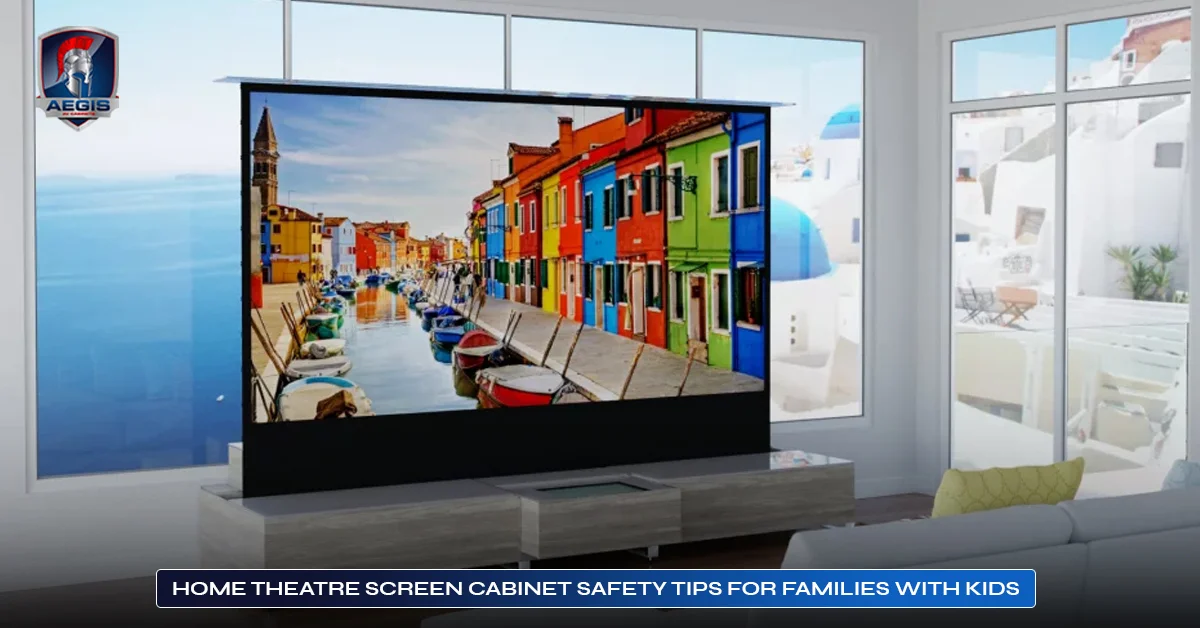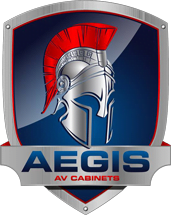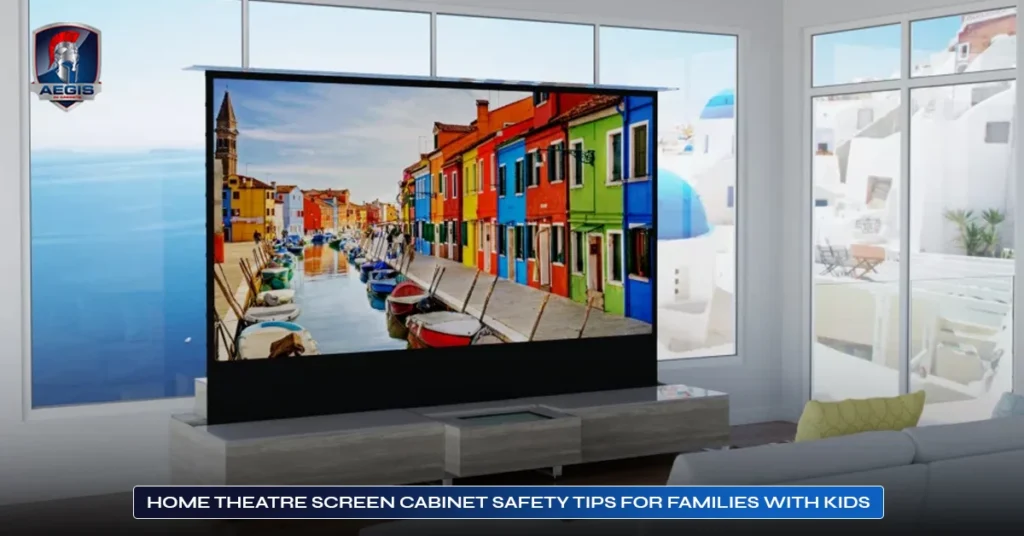
In today’s times, the home theatre screen cabinet is more than just a luxury upgrade. It’s the heart of family entertainment. Whether you’re working with a Motorized Projector Screen Cabinet, a Laser TV Cabinet, or an Ultra Short Throw projector cabinet, safety should be your top priority.
This guide offers essential tips for parents who want to combine safety with style. It’s packed with practical advice on choosing the right cabinet, proper installation, and future-proofing your setup. If you’re a parent ready to design or update your home theater space, keep reading. We’ll help you achieve peace of mind without compromising on style or performance.
Why Childproofing Your Home Theatre Screen Cabinet Is Essential
Children are naturally curious. That curiosity can lead to danger. Children’s innate inquisitiveness drives them to always try to satisfy it. A screen and its cords, along with a screen controller, may look extremely inviting to a kid. If not adequately controlled, they may cause some grave injuries in an unstructured setup. A poorly set-up system might result in:
- Cabinets tipping over
- Finger injuries from motorized screens
- Expensive AV equipment is getting damaged
- Dangerous cord entanglements
- Accidental screen deployment
Your home theater should be a safe space, full of fun and relaxation for the whole family. It shouldn’t be a hidden hazard zone.
Features That Make a Home Theatre Screen Cabinet Child-Safe
For a home theater system, safety features to protect children should be a priority while selecting a cabinet model:
Full Enclosure With Lowered Profile
Children can tamper with internal components or unshielded wires. A motorized UST projector cabinet with a fully enclosed system prevents access to all parts and exposed cords. Rounded edges and corners promote safety while providing stability.
No Manual Control With Lockable Options
No manual buttons should be available on the cabinets. Instead, they should be replaced with smartphone-operated controls that have secure remote access with child locks. This is crucial for motorized projector screen cabinets.
Tip-Proof Engineering And Sturdy Design
Excess weight does not improve safety. Solid cabinets boasting patented weight distribution tend to have optional wall anchoring kits, maintaining stability even during playtime.
Hiding Cables and Soft Close Hinges
Kept out of reach, unshielded power cords are concealed cables set to change position later. Drawers or compartments that are on soft-close hinges have the potential to reduce the risk of trapped fingers.
Considerations When Buying a Home Theatre Screen Cabinet for Families
If you’re shopping with kids in mind, don’t just look for “cool AV furniture.” Ask yourself:
- Can the screen only be deployed under supervision?
- Are there moving parts that need extra clearance?
- Is the cabinet mountable or anchorable safely?
- Does it work well with Laser TVs or UST projectors?
- What’s the long-term value in terms of safety and upgrades?
The Ultra Short Throw projector cabinet with screen is a great family option. Its compact design and near-wall throw distance remove tripping hazards that come with ceiling-mounted projectors or exposed floor stands.
Installation Safety Tips: Do It Right from the Start
Proper Installation requires just as much thought as cabinet selection. As you set up, take note of this childproofing guide.
Anchor the Cabinet
Whether you have a laser TV or a large motorized UST cabinet, make sure it’s secured to the wall or floor. Remember to use anti-tip kits and carefully follow the manufacturer’s instructions.
Maintain Safe Clearance Zones
Check that there’s at least a 2–3 foot clearance in front of every motorized screen or projector and ensure no toys or furniture are kept there.
Enable Safety Locks
Turn on child lock settings on remotes and store controllers out of children’s reach. If your cabinet has an app, make sure to protect it with a passcode.
Maintenance Tips to Keep It Safe Long-Term
Even accompanying the safest setups needs some care from time to time. Follow these basic steps to make sure that your home theater screen cabinet remains family-friendly:
- Check moving mechanisms once a month. Watch for any resistance or delays that indicate possible damage.
- To prevent overheating, periodically clean the internal panels and air vents.
- At least every 3 months, the control locks should be tested for functionality.
- Padding and corner guards should be replaced once every year because of wear and tear.
Choosing the Best Home Theatre Screen Cabinet for Safety & Experience
Now, let’s examine the different cabinet types, its relative safety, and performance balance.
Motorized Projector Screen Cabinet
- Stationary theater rooms use this type often.
- Must include motion-safety sensors.
- Best with ceiling clearance and wall bracing.
Ultra Short Throw Projector Cabinet with Screen
- Great for wall-adjacent setups.
- Reduces equipment exposure.
- Works well with child-safe screen lifts.
Laser TV Cabinets
- Elegant with fewer parts.
- Often includes built-in storage.
- Select models with soft-closing drawers and anti-tip features.
All cabinets are useful in varying ways, but their engineers are essential in design and safety features.
Comparing Safety: Mass-Produced vs Custom AV Cabinets
Most readily available AV cabinets fail to consider user-friendliness for families. Here is how custom alternatives like those from Aegis AV compare:
| Feature | Mass-Produced Cabinet | Aegis AV Cabinet (Custom) |
| Child Safety | Basic, often overlooked | Advanced, built-in safety features |
| Tip Stability | May require extra kits | Engineered for optimal balance |
| Wire Management | DIY solutions needed | Integrated wire management system |
| UST/Laser TV Compatibility | Limited fit | Tailored cutouts for a perfect fit |
| Longevity | 3–5 years | 10+ years, upgradable |
| Patent-backed Design | ✖ | ✔ |
Why Safety Meets Innovation with Aegis AV
Aegis AV understands that the cabinet for your home theater screen is more than just furniture; it is a part of your home.
Unlike other companies that simply build cabinets, we hold patents. Our motorized UST projector cabinets, laser TV consoles, and AV solutions are crafted with precision. Here’s what sets us apart:
- Safety-first designs combine with cinematic performance.
- All products are proudly made in the USA out of premium materials.
- All components are tested for motion and are proven safe for families.
- Customization options can accommodate UST, laser, or standard projectors.
- Premium Audio Visual performance shouldn’t come at the cost of peace of mind.
FAQs
What Is A Home Theatre Screen Cabinet?
A home theater screen cabinet is a customized piece of furniture designed to store your projector screen and television, as well as other AV devices. These cabinets organize your home entertainment devices and keep fragile gadgets safe. Many have motorized screen lifts, cable management systems, and sections for speakers or AV receivers.
How Do Motorized Projector Screen Cabinets Work?
These cabinets conceal the screen until it is needed. The screen can be deployed with the click of a button or via a remote control through a motorized lift system. This feature enhances the room’s uncluttered appearance while maintaining effortless integration with the rest of the house’s design.
Are Motorized Home Theatre Screens Safe For Kids?
Motorized screens can be safe for children if the installation and childproofing treatments are followed. Lockable controls, safe cabinet bolting to walls to prevent tipping, and childproof cable television management help reduce the risk. Use cabinets with soft-close systems to eliminate the danger of injury from moving parts.
Can A Home Theatre Screen Cabinet Fit A Laser TV?
Of course, most modern home theater screen cabinets are equipped with specs that enable them to accommodate Laser TVs. These cabinets come with special cutouts for Laser TV projectors and additional storage space for other pertinent equipment. Laser TV cabinets have sturdy construction and cable management, and its sleek design enhances the viewing experience provided by the Laser TV.
What Size Cabinet Do I Need For An Ultra Short Throw Projector?
The cabinet size for an Ultra Short Throw (UST) projector is identified by the measurements of the projector itself and the available space. UST projectors require a specific width for the cabinet to allow moving and an area without obstacles for unblocked projection. Specifically created low-height cabinets are explicitly produced UST projectors near to the screen.
Final Thoughts: Build a Safer Entertainment Space
Childproofing your home theatre screen cabinet doesn’t mean you have to sacrifice your viewing experience. With the right safety features, careful installation, and thoughtful cabinet choice, you will enjoy:
- Increased safety for children
- Neater AV setup
- Reduced worry regarding moving parts and cables
- Smart adapting technology
- A sound, future-ready handy solution.
Choose wisely. Choose safety. Choose a future-ready solution.

